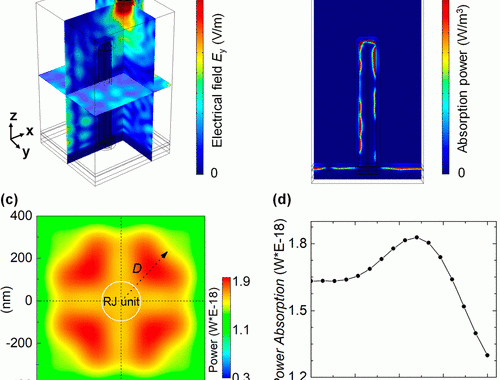
Nanoscale Photovoltaic Responses in 3D Radial Junction Solar Cells Revealed by High Spatial Resolution Laser Excitation Photoelectric Microscopy
Authors: Huili Zhang, Yakui Lei, Qiang Zhu, Tong Qing, Ting Zhang, Wanghao Tian, Matthias Lange, Meiping Jiang, Chao Han, Jun Li, Dieter Koelle, Reinhold Kleiner, Wei-Wei Xu, Yonglei Wang, Linwei Yu, Huabing Wang and Peiheng Wu
ACS Nano 2019, 13, 10359-10365
Abstract: The actual light absorption photovoltaic responses realized in three-dimensional (3D) radial junction (RJ) units can be rather different from their planar counterparts and remain largely unexplored. We here adopt a laser excitation photoelectric microscope (LEPM) technology to probe the local light harvesting and photoelectric signals of 3D hydrogenated amorphous silicon (a-Si:H) RJ thin film solar cells constructed over a Si nanowire (SiNW) matrix, with a high spatial resolution of 600 nm thanks to the use of a high numerical aperture objective. The LEPM scan can help to resolve clearly the impacts of local structural damages, which are invisible to optical and SEM observations. More importantly, the high-resolution photoelectric mapping establishes a straightforward link between the local 3D geometry of RJ units and their light conversion performance. Surprisingly, it is found that the maximal photoelectric signals are usually recorded in the void locations among the standing SiNW RJs, instead of the overhead positions above the RJs. This phenomenon can be well explained and reproduced by finite element simulation analysis, which highlights unambiguously the dominant contribution of inter-RJ-unit scattering against direct mode incoupling in the 3D solar cell architecture. This LEPM mapping technology and the results help to achieve a straightforward and high-resolution evaluation of the local photovoltaic responses among the 3D RJ units, providing a solid basis for further structural optimization and performance improvement.
